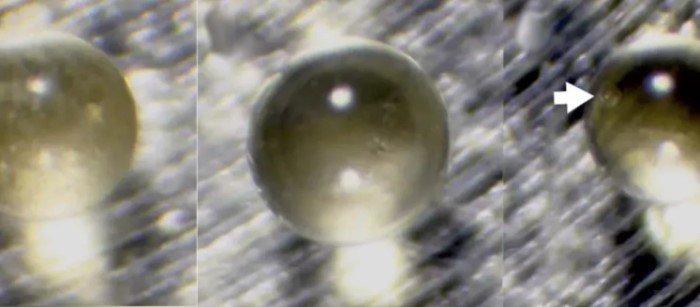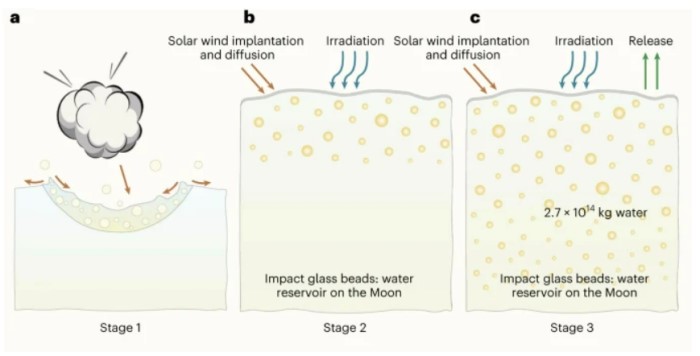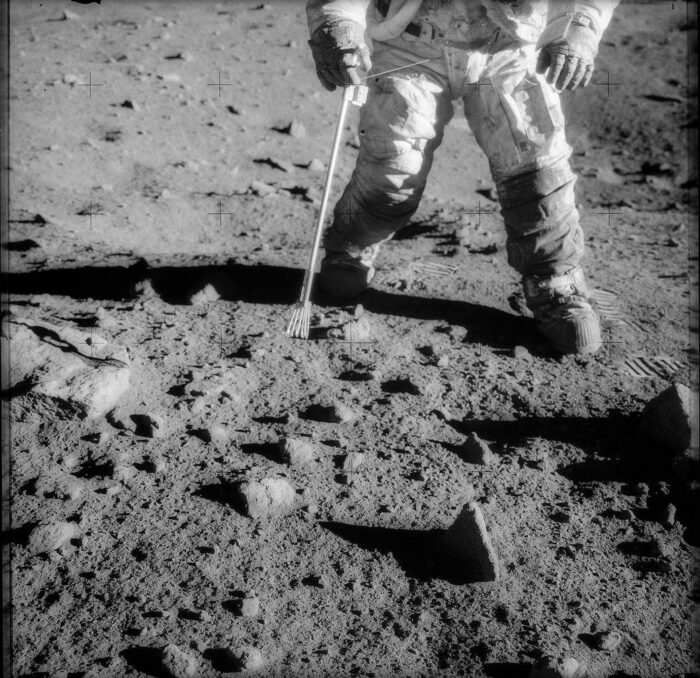In yesterday's post, we talked about the newly announced crew of Artemis 2, a.k.a. the group that will become the first humans to fly to the Moon in over 50 years.
The mission is ushering in a whole new era of lunar exploration. The Artemis program will ultimately place a permanent base on the Moon, as well as an orbiting space station, Lunar Gateway, that will act as a launching point for missions to Mars.
And today, we're going to look at how these future missions might get a very important resource. Water.
Water is not only vital to life, it is really heavy and impractical to transport over large distances. So any successful base on the Moon is going to need to find a way to maintain a source of water on the surface, and not rely on transports bringing it over.
Last year, new research from China's Chang'e 5 lunar rover revealed that traces of water was hidden on the Moon, located inside a boulder. And now further study is saying that there is actually a lot of lunar water that is trapped inside an unusual place.
Glass beads!
Not jewelry

These glass beads were found within a meteorite that crashes on Earth. They are similar to the ones found on the Moon. (Van Ginnekan, Genge and Harvey 2018, Geochimica et Cosmochimica Acta)
When we say 'glass beads', you're probably imagining a kind of jewelry. But these are something different.
These beads are very tiny, measuring only a few microns across (this is a measurement used for microscopic objects). And from what the Chang'e 5 data can determine, they mixed all throughout the dusty lunar soil.
The beads are formed after meteors slam into the surface of the Moon at tens of thousands of kilometres per hour. The intense energy of the impact sprays particles of the surface everywhere and creates molten temperatures. Part of what is formed are these tiny beads of glass!
This process has happened millions of times over throughout the Moon's history, meaning that the surface is loaded with these glass beads. So that is how the beads get there. But where does the water come from? Is it formed inside the glass?
No, but we're getting closer to the answer!
Solar wind + glass = water

This diagram shows the process that places water inside the glass beads on the Moon. (He et al., Nature Geoscience, 2023)
Though glass beads aren't created loaded with water, they are full of something important: oxygen.
As you may recall, the molecular signature of water is H2O, or two hydrogen atoms (H) plus one oxygen atom (O). The glass beads already have the necessary oxygen. So where does the hydrogen come from? Believe it or not, the Sun!
Solar winds are loaded with ionized hydrogen (in the case, essentially just lone protons). Because the Moon has no atmosphere or magnetic field, these winds rain down hydrogen upon the surface, which reacts with the oxygen inside the glass. Water is formed and absorbed into the beads, like a tiny sponge. Neat!
Small but mighty

Microscope images of the lunar glass beads. (He et al., Nature Geoscience, 2023)
It's a cool bit of science, but naturally leads to a question: Can tiny glass beads actually hold enough water to sustain a Moon base and its crew? Well, let's do some math.
Each glass bead can only hold around 0.002 grams of water per gram of its own weight. In other words, around a thousandth of a bead is water. And those beads are microscopic in the first place.
A drop of water is about 0.05 grams. So if you have 25g of glass beads, you could get a single drop of water.
Hmm. That doesn't sound promising, does it? Except that the Moon is absolutely littered with these beads, everywhere! Scientists estimate that altogether, the beads likely hold around 270 trillion kilograms (297.6 billion tons) of water. That's over half the amount of water in Lake Erie (which holds 480 trillion kg of water).
In other words, quite a lot of water.
Of course, that water would need to be harvested somehow—it's not a matter of just pouring yourself a glass of, er, glass! But this research points to an interesting way that humans might make being on the Moon a little more comfortable in the future!
 Walking on water? Not quite. But a new study has revealed that microscopic traces of water exists all across the Moon's surface. (NASA)
Walking on water? Not quite. But a new study has revealed that microscopic traces of water exists all across the Moon's surface. (NASA)









